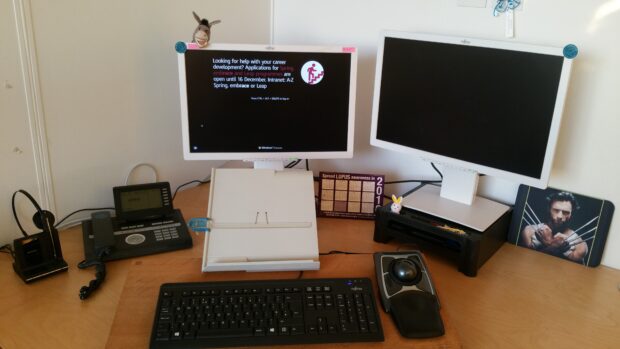
In this latest blog post in our Accessibility and Me series, we speak to HMRC employee Rani Nayyar about how Dragon accessibility software helps with her work.
Tell us about yourself
I work in the Alcohol Warehousing Registration Scheme Team as their support in Birmingham. My previous role was in the Default Surcharge Team as a caseworker.
I was diagnosed with Systemic Lupus Erythematosus when I was 29. This is an autoimmune condition. It means that the immune system starts to attack and inflame healthy cells, tissue and organs.
For example, when I catch a cold it takes my immune system longer to fight it off - not good news.
Since the diagnosis in 1999 I have also been diagnosed with Raynaud’s Phenomenon (restricted blood flow in the hands and feet); Osteoporosis (weakening of the bones): Epilepsy (causes repeated seizures) and Fibromyalgia (causes pain all over the body)
What technology do you use?
I use Dragon Naturally Speaking software due to the problem with my hands. It was recommended to reduce the use of the keyboard and mouse.
It converts speech to text and can simulate keyboard and mouse presses by voice command. The software can be programmed to follow sequences. These are either already built in or created by me.
User guides, exercises and the mentors network help with using Dragon on HMRC systems. The software has been downloaded to my computer and I use a Plantronics wireless headset.
I continue to train Dragon so that it recognises my voice.
I have recently changed job roles so I now have to train it to navigate around different systems. I will quickly learn what’s easy to navigate around and what’s not so easy.
How do you use the web?
I use the Dragon commands that have been written and I have had to train it for specific commands so that I am able to navigate easily around areas that I use.
If Dragon doesn’t recognise what I have said, I am able to train it by going into the vocabulary menu. I type the word in written form in the text box and then select ‘train’.
Navigating around some of the pages has been straightforward so far, by saying any of the following commands:
- “go to top”
- “go to bottom”
- “page down”
- “page up”
- and a good one is “start scrolling up/down”
What barriers do you regularly face?
I struggle to use Dragon around the internet, like for online banking. I have got as far as saying the password then saying “enter”. But the service does not appear to recognise voice assistive technology.
Each time I have tried to go online, I am asked to verify my security questions. I end up having to manually use an iPad for general shopping, online banking and reading emails.
In my current and previous job roles, I’ve been able to navigate around the spreadsheets developed in-house. The spreadsheets look good but they don’t necessarily take accessibility into account. So this resulted in taking a lot of time and effort to learn.
I do have problems navigating around our corporate applications, as it all seems like a long process. There are also issues with dictating in these areas. It would be so much easier if you could just say a simple command.
Surrounding noise is a problem when using Dragon. Fortunately, I have my own room and I am able to shut the door to block this out.
What should content designers, designers and developers be doing?
The sort of general difficulties I’ve encountered include dictating into edit boxes and using the in-house templates and spreadsheets. Designers and developers should contact the people who use these programmes on a daily basis. They need to ask them to carry out test runs before rolling out new applications.
With technology constantly changing, I think our input would certainly make it easier all round. The process should be as simplified as possible so that it doesn’t take too long to be trained or to use it.
You can read more in the other interviews in our Accessibility and Me series.
If you would like to talk about accessibility issues you face for a piece in this series, contact accessibility@digital.cabinet-office.gov.uk.
Don’t forget to sign up for email alerts.

